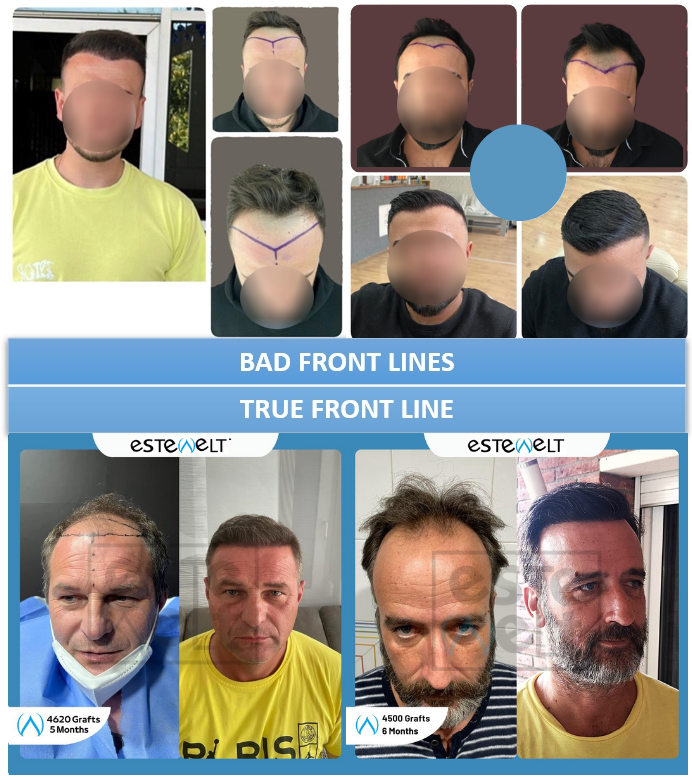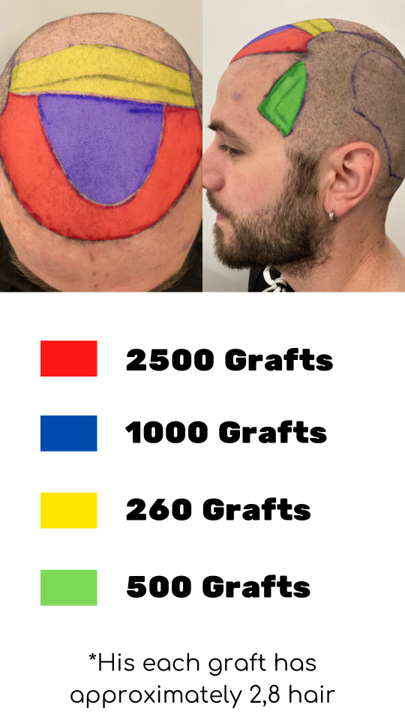Hair transplantation is a permanent solution to the problem of thinning and baldness in people with hair loss. Hair transplantation is the process of taking hair from safe donor areas and transporting it to sparse or balding areas. In hair transplantation, the patient's own healthy hair is added to the spilled area. Hair transplantation is planned and applied completely individually.
WHAT IS THE FUE METHOD?
•Follicular unit extraction. It is the process of removing hair follicles. It is also the name of the old hair transplant technique.
•With this technique, hair follicles are taken one by one with the micro-materials used and do not leave any traces in the donor area.
•The diameter of the material used is in the range of 0.7-.0.9, and the degree is selected according to the thickness of the hair strands of the patient.
•This method is used by F.U.E and D.H.I. It is the extraction method used for both hair transplantation techniques.
•It is currently the most common and safest extraction method.
HOW MANY GRAFTS / A GOOD EXTRACTION OPERATION
• Ensuring the homogenous distribution of the grafts is crucial during the extraction process, as the donor grafts cannot grow back once taken. To achieve a natural look, the extraction should be performed discreetly, even when the hair is shaved at a 3-degree length.
• The primary concern in a successful extraction process is to avoid damaging the donor area. This involves carefully considering the width of the donor area and its hair density. Typically, only around 35-40% of hair follicles from the donor area can be safely harvested. For patients with weak hair in the donor area, this percentage may decrease to 25%. Consequently, the number of grafts that can be obtained depends on the quality and density of the patient's donor area.
•Therefore, for an average patient, the number of grafts that can be taken in an avarege session varies between 4500-5000 grafts with a risk-free extraction. If the hair follicles in the nape area of the patient are weak or do not have enough dense and thick hair follicles, this number may decrease to 3500-4000, in cases where the nape area is large and the hair follicles are dense and strong, the number of grafts can increase up to 5500-6000. Therefore, the most important issue for the number of grafts to be taken in the extraction process is the sufficient donor area of the patient.
SOME EXTRACTIONS EXAMPLES AND RESULTS
Correct example
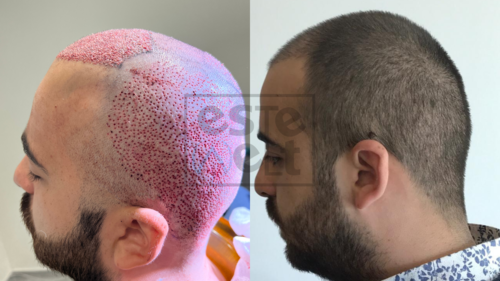
Wrong Example
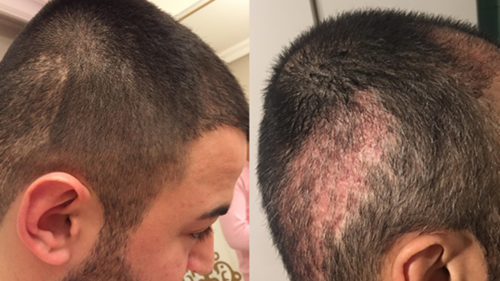
WHY 2 SESSIONS
• If the patient's need for grafts is greater than the number of grafts that can be taken without damage; In the first session, the maximum amount of grafts that can be taken without damaging the patient are taken and in this process, the priority areas are planted. After 6 months, the second session is done after the donor area has healed. In the second session, the parts that are not planted in the first session are planted by making a less frequent intake. In addition, since we can see the result clearly after the 6th month of the patient, small interventions can be made to the desired places in line with the demands of our patient.
WHY SHOULD YOU WAIT FOR 6 MONTHS?
• After the first procedure, if the second session is to be performed, it is necessary to wait 6 months for this. The reason for this is that 80-90% of the roots planted within 6 months after the first operation are grown. Another reason is to be able to see clearly how much of the donör area is available for extraction in the second transaction after the first transaction.
THE LOW DENSITY DONOR AREA
•As we mentioned before, extraction is not performed above a certain rate in order not to damage the donor area. However, since the donor area of some of our patients has very sparse and weak hair strands, there is a possibility that there is a risk for the donor area even when a small number of grafts are taken. In such cases, the area where our patient needs hair transplantation is very large. If the number of grafts that can be taken does not meet the number of grafts (3500-4000) required for a minimum 1-session procedure, it is supported by extraction from the beard area. If it is thought that it will not be sufficient even in this case, the patient is not accepted for the operation.
THE DIFFERENCE BETWEEN DHI-FUE
•Both techniques are very common hair transplantation techniques.
•First of all, there is no difference in transaction quality between dhi and fue.
•The quality of the operation depends on the experience and ability of the people performing the operation in both techniques.
•The same quality results can be obtained with both techniques, which will be performed by a team of experts. But the most important difference between the two techniques is the method of placing the roots on the scalp for hair transplantation.
•With the F.U.E method, holes are made with a sharp scalpel as many as the number of hair grafts to be transplanted before the transplantation process is started.
•This process takes 45-60 minutes on average.
•The grafts to be transplanted later are placed in the canals by at least two personnel using forceps. In other words, when the planting is over, the holes opened 4-6 hours ago continue to bleed during this entire period.
•The hair follicles are placed in the middle of the needle in the clamp using forceps (pen placement) and placed directly on the scalp by the transplanting personnel. Thats why will not bleeding as much like FUE with DHI teqnique.
DHI ADVANTAGES
1-The graft is placed directly on the scalp with a pen. For this reason, holes are not drilled in advance (1 hour) for the roots to be placed on the scalp. This ensures less bleeding.
2- The grafts and the tip of the pen are very close to each other. In this way, there is no gap between the hole and the hair root after transplantation. This acts as a buffer for bleeding.
3- Transplantation is done by 1 person in DHI technique and by 2-3 people in FUE method. In this direction, hair transplantation planning is applied more accurately in the DHI technique.
4- Complication (necrosis) risk is 90% less than FUE.
5- Transplantation can be done without shaving the hair.

DHI AND FUE DIFFERENCE IN ONE VIDEO
IMPORTANT ISSUES IN HAIR TRANSPLANTATION
THE QUALITY OF THE HAIR GRAFTS
First of all, the hair quality in the donor area of our patient is the most important issue. graft and hair are not the same thing. Graft means hair follicle and a follicle can have more than one hair strand.
STRONG GRAFT

THINY GRAFT
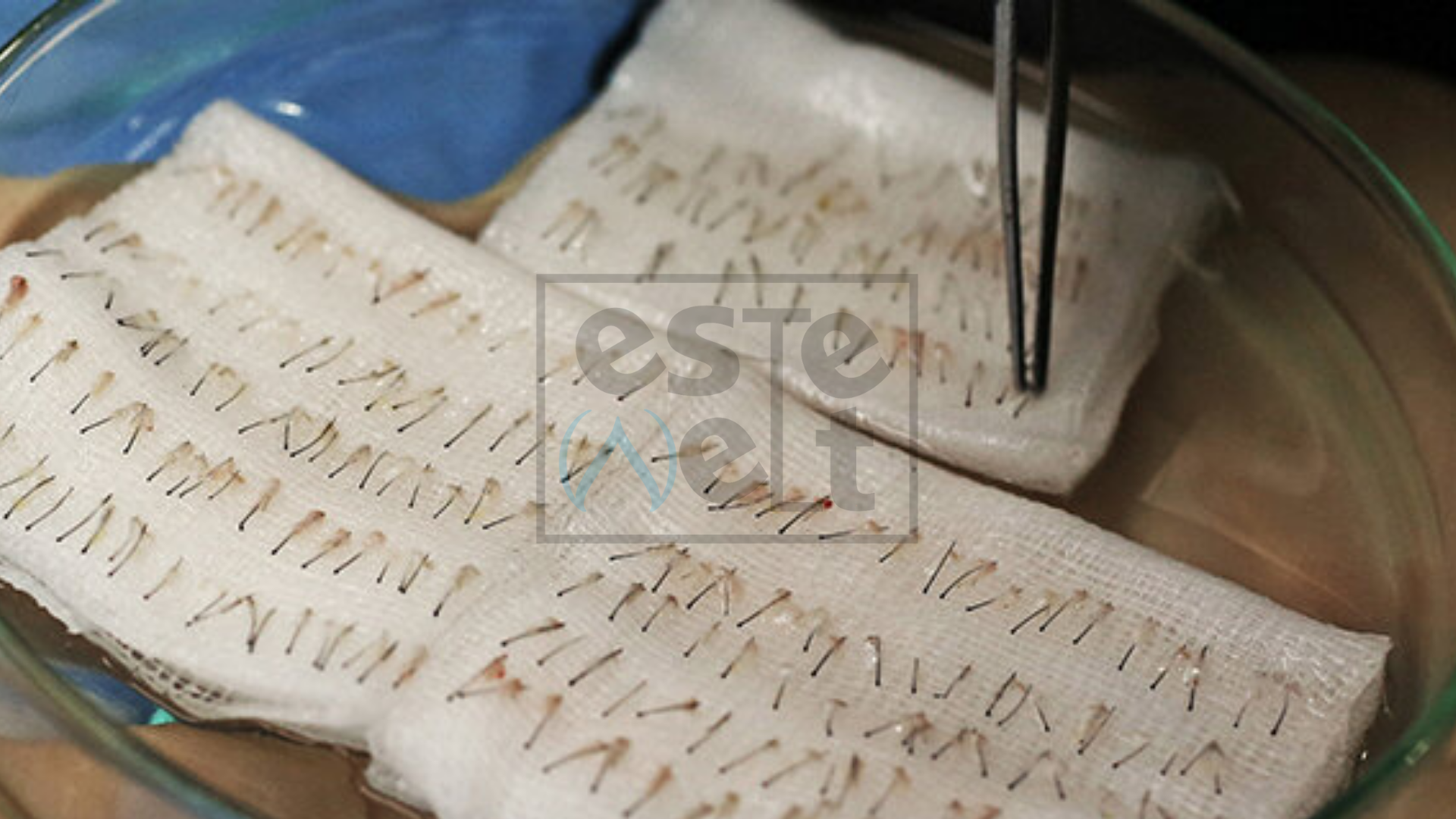
If the graft grouping is 1 to 2 weighted, it means that the hair type of our patient is weak. In these cases, even if we get the same number of grafts as another patient with an average of 2-3 grafts, there may be a difference of approximately 4000-5000 hairs between our two patients when 4500 grafts are transplanted.
Therefore, the most important issue for a good result in hair transplantation is the quality of the grafts. In addition, one of the most important issues for graft quality is that the grafts can be taken without any damage. For this, the person who performs this procedure should have the experience of removing hair follicles by performing this procedure at right angles to the hair follicles without cutting the hair.
The second most important issue is the size of the plant to be planted. If the hair to be transplanted is very, an average of 4500-5000 roots that can be taken without damaging the donor area will not be enough to cover the entire opening.
HAIRLINE
• Naturalness is a crucial factor to consider in hair transplantation. The finest hair transplant results are achieved when the transplanted hair seamlessly blends with the existing hair. It is essential not to treat hair transplantation as a one-size-fits-all procedure. Each individual has a unique head structure and anatomy, so it is vital to customize the front hairline for every patient accordingly.
• One common mistake in hair transplantation is attempting to establish a standard front line that applies to everyone. However, this overlooks the individual variations in head shape and facial features. To ensure a natural look, it is imperative to create a distinct front line tailored to each person's specific characteristics. Additionally, another mistake to avoid is improperly connecting the corners of the front hairline with the temples at the wrong angle. This misalignment can lead to an unnatural appearance and should be carefully avoided during the transplantation process.

•This will not only be unnatural for the male hairline and will look similar to the female hairline. Therefore, when viewed from the outside, it can be understood by everyone that there is an anomaly. It is not enough that the hairline is suitable only for the male facial features. Apart from this, it should be determined according to the age of the person to be transplanted.

•Another issue we attention to when determining the hairline is the quality of the transplanted hair grafts. The hairline of a patient with very weak hair follicles should be above an average hairline. If the hair follicles are weak but the hairline is determined from below, an unnatural situation will occur here.
CORRECT IMPLANT PLANNING
Hair transplant planning is a critical aspect that heavily relies on the doctor's experience. A skilled and experienced doctor can achieve excellent results even with weak hair by creating a front hairline that suits the patient's age and hair type, resulting in a highly natural appearance.
The significance of the doctor's planning cannot be overstated. It involves analyzing the patient's current hair loss situation and predicting future hair loss patterns to design a comprehensive hair transplant strategy. This includes identifying the areas that may need transplantation in the future and determining the optimal density and distribution based on the patient's unique hair characteristics.
Therefore, it is crucial for the operating doctor to possess the necessary experience to devise a well-thought-out plan that ensures a natural and aesthetically pleasing outcome for the patient. A well-planned hair transplant procedure, tailored to the individual's specific needs, contributes significantly to the success of the transplantation and overall patient satisfaction.








